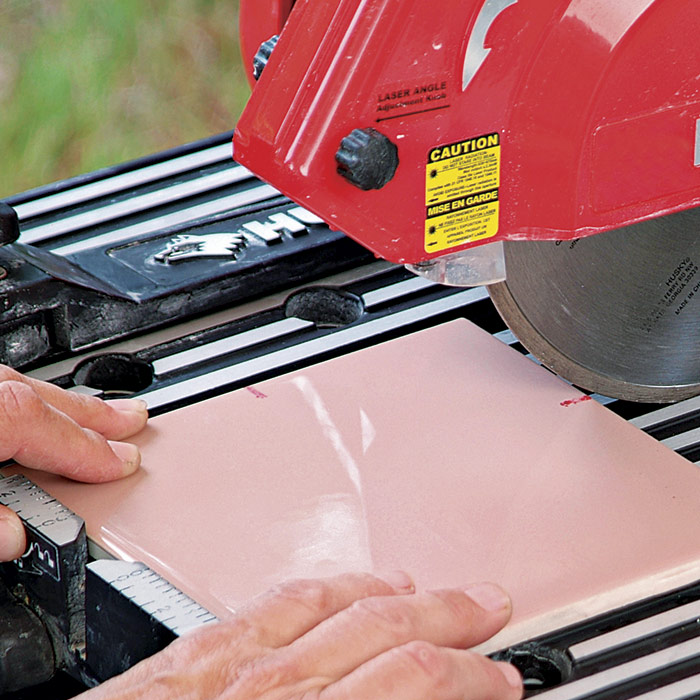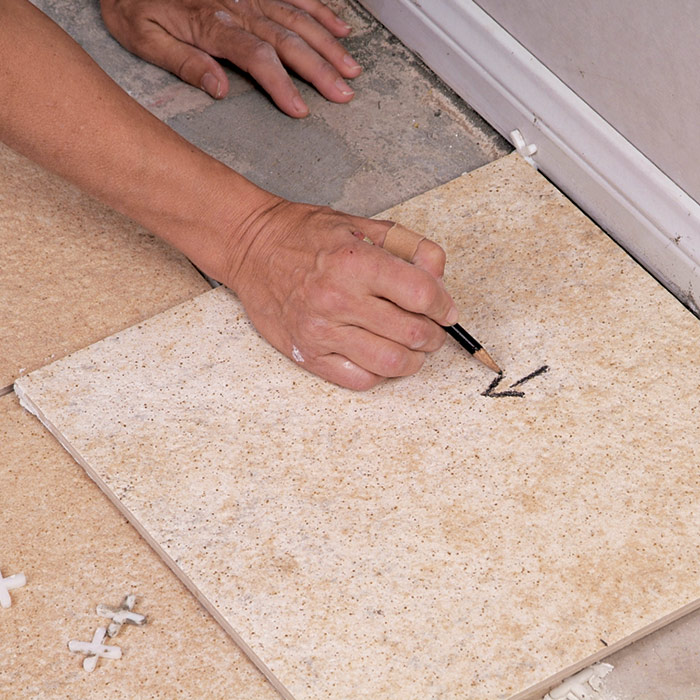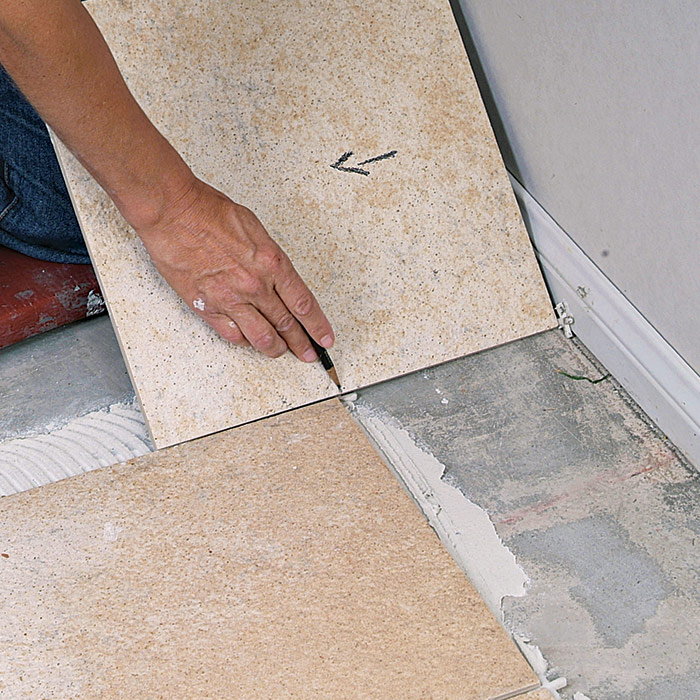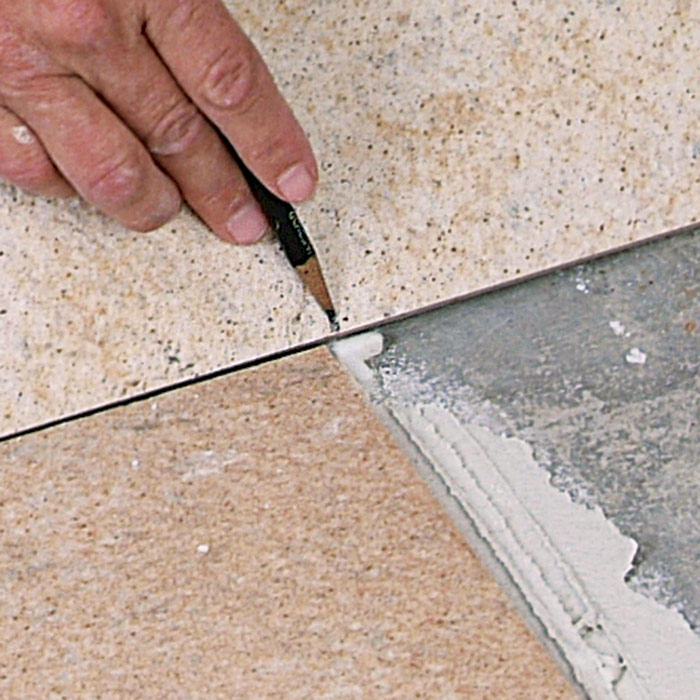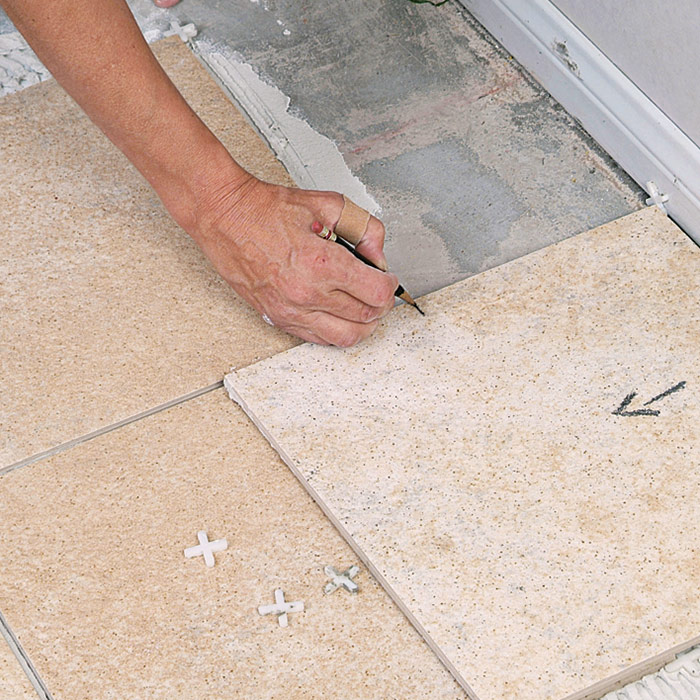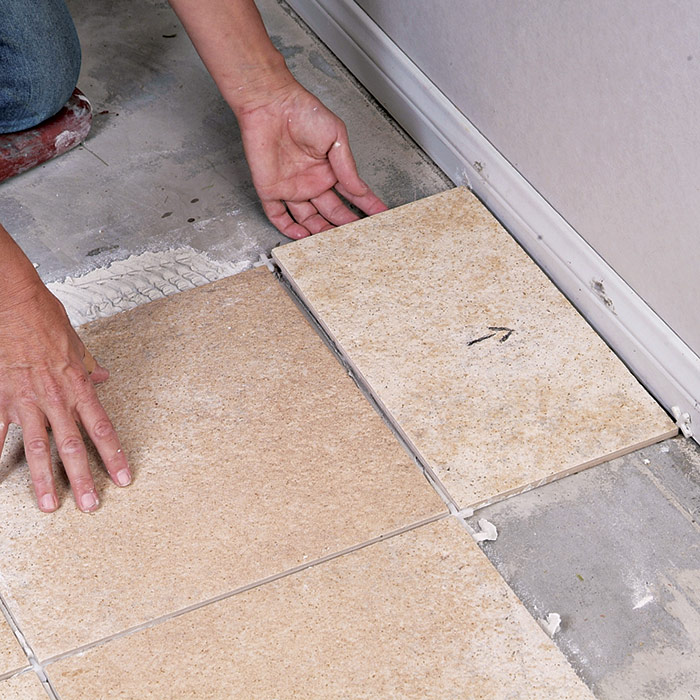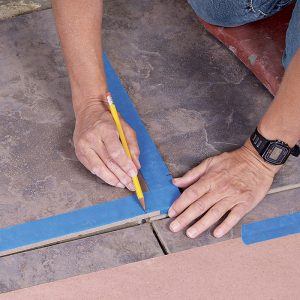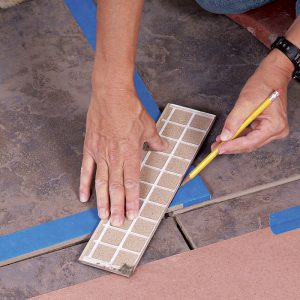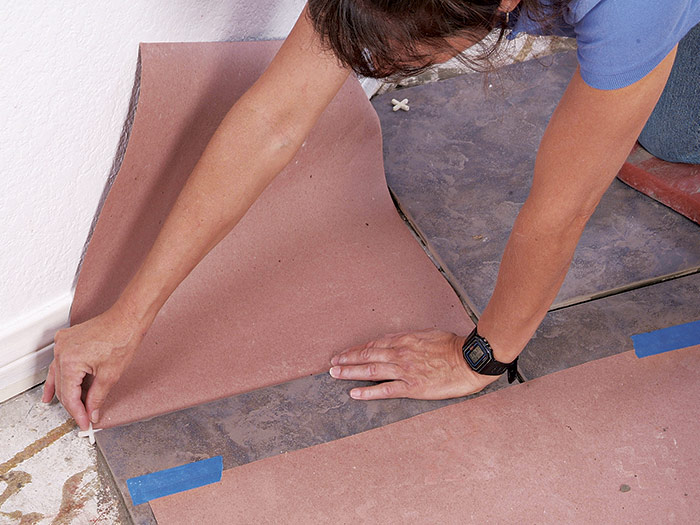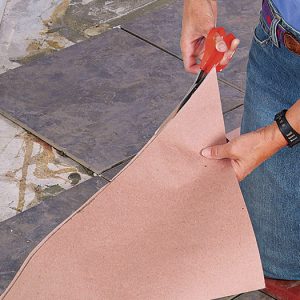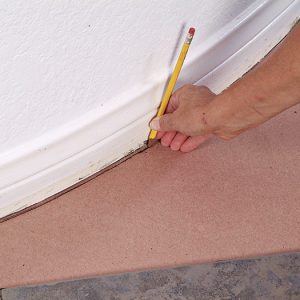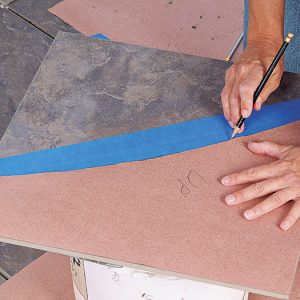Marking Cuts for Tile
Learn how to make clear and accurate marks on tiles for straight, diagonal, and more complex cuts.
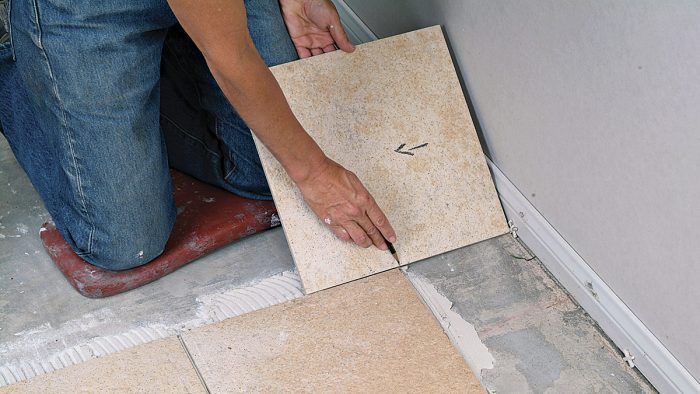
Marking Straight Cuts
We mark the cuts for tiles that go against walls at the edge of a counter or floor by transferring the distance directly from the counter or floor to the tile. This ensures that the cut piece will fit, even if the wall isn’t parallel to the tile. You may find the method a bit confusing at first because the tile’s orientation is reversed during the marking process. To help you keep track of the tile’s orientation during marking and cutting, start by drawing an arrow on the “good” portion of the tile so that it points toward the “waste” portion that will be cut off 1.
Now mark one edge of the tile to be cut (the workpiece) by setting it between the wall and the last full field tile, with the arrow pointing away from wall 2. Here it points away from the wall but after cutting, you will flip the tile and it will point to the wall. Be sure to use a spacer between the workpiece and the wall, so you’ll have space for a caulk joint. To account for the caulk joint, mark the workpiece at the edge of the field tile’s spacer 3. Now slide the workpiece over to other side of the field tile and mark the other edge at the spacer as before 4. Connect the two marks with a pencil and you’re ready to cut the tile. Remember, when the tile is set in place, the cut edge will go toward the wall (the direction in which the arrow should point) 5. Be sure to use a rubbing stone to smooth the edges.
Marking Diagonal Cuts
When square tiles are set diagonally, instead of parallel to the wall surfaces, you’ll have to trim the tiles around the edges of your installation. The process is roughly the same as marking straight cuts (see the facing page), except that the adjacent sides of the workpiece are marked, instead of the opposite sides.
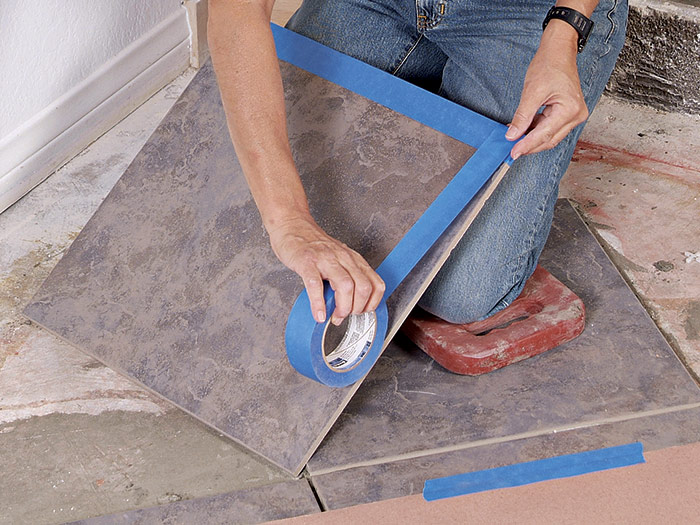 |
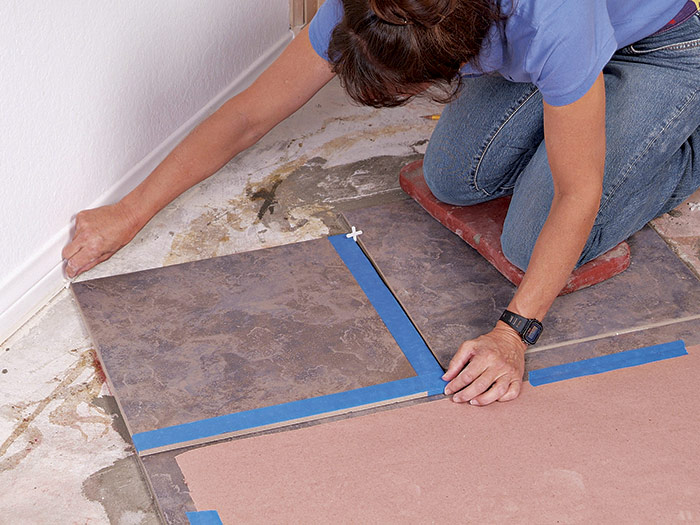 |
If the tile you’re working with is hard to mark with a pencil, apply masking tape along the edges 1. Set one spacer against the wall (to create room for a caulk joint) and another against the field tile that’s already been set, to help you keep the workpiece parallel to the set tiles 2. Make a mark on the wall-facing side of the set tile’s grout line 3. Now move the tile and both spacers to the opposite set tile and mark the other side of the cut 4. Draw a line to connect the two marks 5. Cut along the line, and you’ll have a perfectly cut tile, ready to set.
Making Complex Cuts
An easy and time-saving method for marking a complex shape—concave curve or irregular edge—on a tile to be cut requires the use of a paper pattern. For example, to mark a cut on a tile that butts up to a curved wall, start by cutting a piece of rosin or brown paper the size of your tile. For such a cut, a paper template will save you lots of hair pulling. Place the paper where the tile will
go when set, positioning it carefully with tile spacers 1. Now press the paper down to create a curved crease where the paper meets the wall 2.
Cut the paper along the creased line with scissors, then put the paper back in place 3. Use a pencil to draw a line parallel to the curved wall, holding the pencil flat to the baseboard molding 4. This will create a space for grout or caulking between the tile and the wall. Cut the paper along this line, then transfer the curve to the surface of the tile 5.
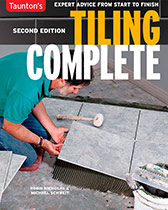 Excerpted from Tiling Complete, 2nd Edition by Robin Nicholas and Michael Schweit.
Excerpted from Tiling Complete, 2nd Edition by Robin Nicholas and Michael Schweit.
Available in the Taunton Store and at Amazon.com.

